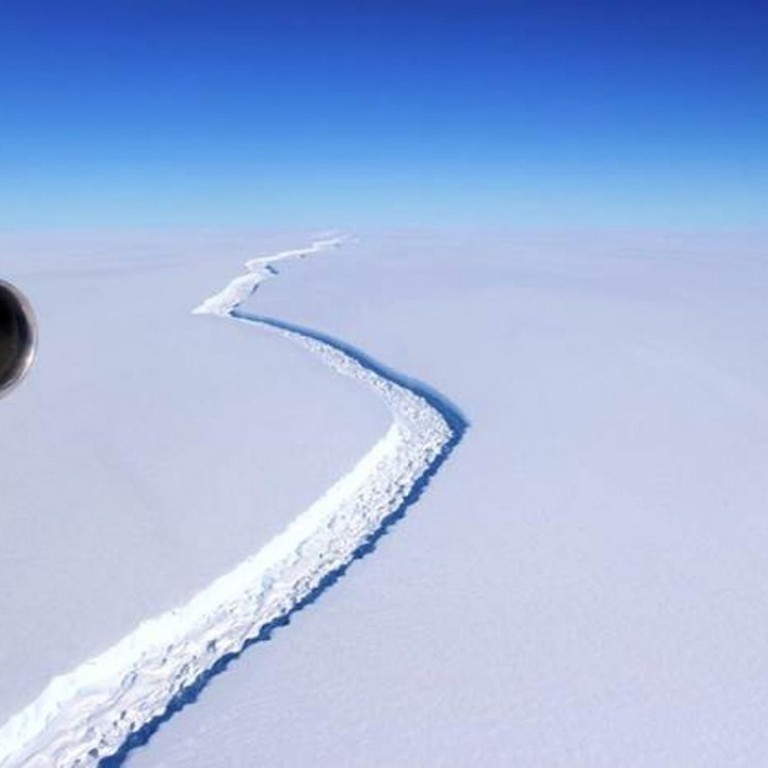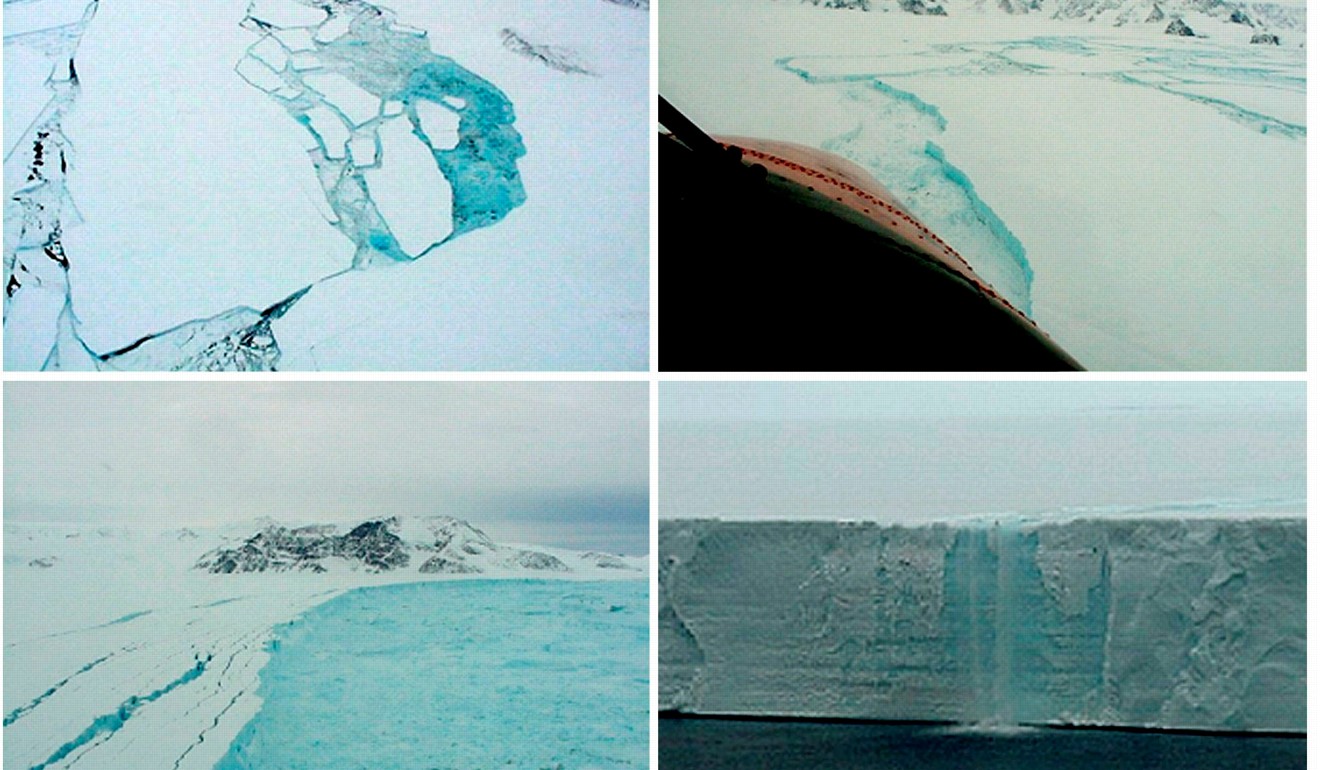
New crack in Antarctic shelf poised to create 5,300 sq km iceberg, 60 times size of Hong Kong island
Another branch has appeared in a huge crack on one of Antarctica’s largest ice shelves, and scientists fear it’s only a matter of time before a huge iceberg - potentially containing up to 5,200 sq km of ice - breaks away.
That’s about 60 times the size of Hong Kong Island. If this happens, the ice shelf may become increasingly unstable and could even fall apart.
Scientists have been closely monitoring the Larsen C ice shelf, located on the east coast of the Antarctic Peninsula, where a large rift in the ice - now about 180km long - has been advancing in rapid bursts in recent years. Between the beginning of December and the middle of January alone, the crack lengthened by about 27km. And since 2011, it has grown by about 80km.

And now, scientists have noticed a worrying development: A new branch has split off from the main rift, about 10km below the tip of the original crack, and has splintered off in the direction of the ocean. The new branch is about 14km long. Altogether, only about 20km of ice now stand in the way of the whole chunk splitting off into the sea.
Researchers from Project Midas, a UK-based Antarctic research project based at Swansea University and Aberystwyth University, observed the new crack in satellite images on May 1.
The biggest concern is not whether the chunk will break off - that seems to be inevitable at this point - but what will happen after it does. The break will sweep away about 10 per cent of the ice shelf’s total area, and scientists have previously speculated that the shelf will become increasingly unstable after this point.
“We have previously shown that the new configuration will be less stable than it was before the rift, and that Larsen C may eventually follow the example of its neighbour Larsen B, which disintegrated in 2002 following a similar rift-induced calving event,” Swansea University professor Adrian Luckman, a leader at Project Midas, said in a statement.
Larsen B was a nearby ice shelf that came to a sudden and dramatic end in 2002 after particularly warm Antarctic summers that caused the ice to melt and splinter. Ultimately, more than 3,000sq km of ice collapsed over the course of just one month. Another neighbour, Larsen A, collapsed in 1995.
The collapse of Larsen C, should it occur, has the potential to unleash enough ice to raise sea levels by, at most, about a centimetre.
The ice shelf itself - which can be thought of as a kind of floating ledge jutting out from the edge of the continent - is floating on the surface of the ocean and wouldn’t contribute to any sea-level rise by itself if it were to break off. But ice shelves generally serve as a kind of stopper at the edges of glaciers, stabilising and containing all the ice behind them. When they break, they have the potential to unleash a flood of ice from the continent that can significantly contribute to rising sea levels.
Whether this is what happens at Larsen C remains to be seen. While researchers have explored several possible scenarios for the ice shelf’s future, its ultimate fate may still depend on a number of factors. Some scientists have expressed scepticism about how serious the consequences of a break might end up being.
One recent study points out that the key question is whether the ice that’s lost from the shelf will be “passive ice,” which doesn’t play a significant role in holding back the flow of the glacier behind it, or whether the break will remove ice from a critical stabilising zone, unleashing a flood of ice.
For now, continued close monitoring will be the key. In January, some scientists speculated that a calving event could occur within a year - meaning it may not be long before the region’s destiny becomes clear. In any case, Luckman noted in his statement that the event, when it happens, is likely to “fundamentally change the landscape of the Antarctic Peninsula.”

